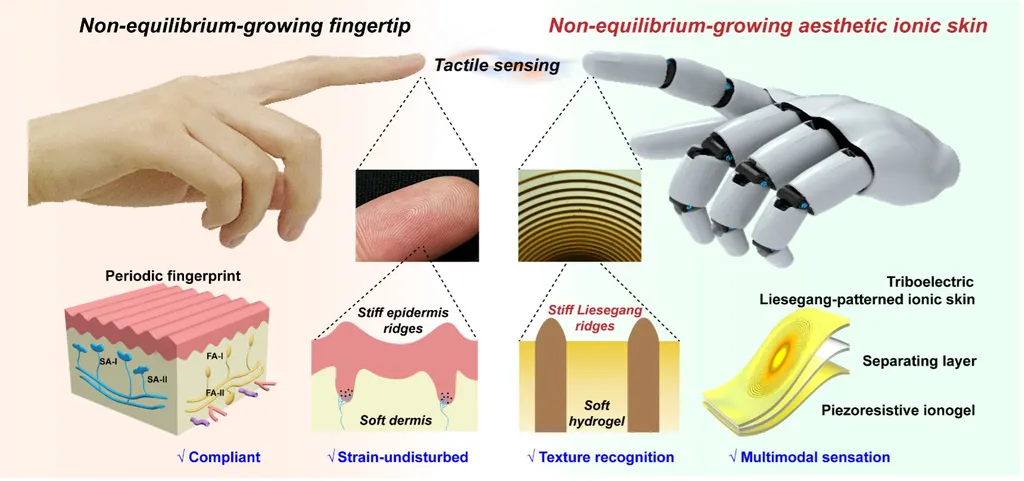In a groundbreaking development that could revolutionize the way robots interact with their environment, researchers have created a biomimetic hydrogel-based sensor capable of dual-mode tactile sensing. This innovation, led by Yu Lv from the State Key Laboratory for Reliability and Intelligence of Electrical Equipment at Hebei University of Technology in China, mimics the complex sensing mechanisms of human skin, offering both dynamic and static tactile detection.
The sensor combines two distinct sensing units: a triboelectric unit for dynamic tactile detection and an ionic-supercapacitive unit for static pressure monitoring. The triboelectric unit achieves a peak voltage of 14.64V, with less than 5% signal decay over 5000 seconds of cycling, enabling robust detection of transient interactions like tapping or sliding. Meanwhile, the ionic-supercapacitive unit exhibits a high sensitivity of 2.69 kPa⁻¹ between 0.8–28 kPa, a rapid response time of 0.5 seconds, and minimal signal drift of less than 5% during seven-day continuous operation, providing stable monitoring of static interactions such as touching or pressing.
“This dual-mode sensing capability is a significant step forward in the field of robotics,” said Lv. “It allows robots to perceive their environment in a way that is much closer to how humans do, which opens up a wide range of applications.”
One of the most promising applications of this technology is in the energy sector. Robots equipped with these sensors could perform intricate tasks such as inspecting and maintaining complex machinery, handling delicate materials, or even performing surgeries. The ability to accurately recognize material types and hardness levels could greatly enhance the precision and efficiency of these tasks.
“The potential commercial impacts are substantial,” Lv added. “This technology could lead to the development of more intelligent and capable robots, which could be used in a variety of industries, from manufacturing to healthcare.”
The research, published in InfoMat (which translates to “Information Materials”), also demonstrates the use of a multilayer perceptron neural network to enable a robotic hand equipped with the biomimetic sensor to intelligently recognize material types and hardness levels with a high accuracy of 98.5%.
This study establishes a paradigm for high-performance electronic skins, advancing human-machine interfaces and artificial intelligence-driven robotics through biomimetic tactile perception. As the technology continues to evolve, it could pave the way for robots that are not only more capable but also more intuitive and safer to work with, ultimately reshaping the future of human-robot interaction.
The implications of this research are vast, and the potential for commercialization is significant. As the energy sector continues to evolve, the need for more intelligent and capable robots will only grow. This innovative sensor technology could be a key enabler in meeting that need, driving progress and innovation in the field of robotics and beyond.

